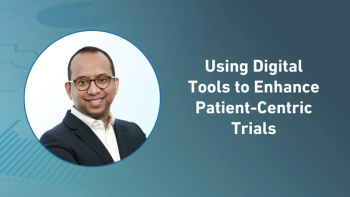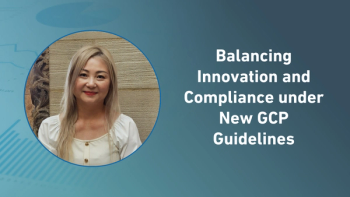
Listening at Scale and Leveraging Conversational Data to Improve Clinical Recruitment
How can managers ensure their clinical trial participants represent future patients?
Clinical trials have a recruitment problem. More than two-thirds don’t meet original patient enrollment for a specific trial—and
One of the biggest hurdles project managers face—especially when they fail to attract enough participants—is ensuring their clinical trial participants represent the patients their drugs are designed to help.
So how do life science companies solve this complex challenge? They can start by listening to conversations at scale during the recruitment process. This approach offers an effective strategy for gathering relevant and useful information to understand participants’ mindsets and any psychosocial factors affecting or influencing specific populations.
When properly categorized and organized, conversational data answers questions about patient fears and frustrations, uncovering issues with:
- Caregiver, familial and societal factors.
- Transportation challenges.
- Social determinants of health (SDOH) impacting trial participation.
Life science companies listening to current and potential participants at scale—and that seek underrepresented populations with insight and intention—improve their clinical trial recruitment success.
The importance of listening
Why listen? Because conversations hold incredible value. Recorded conversations between providers and patients provide a wealth of insight into the frame of mind of patients dealing with specific conditions, diseases, or illnesses. Fears, questions and vulnerabilities often surface during these emotionally-charged conversations.
This research area currently uses structured data sources—claims, clinical and lab data—to understand how clinical diagnoses can lead to specific health outcomes. Where understanding is vaguer and where innovation lags is in analyzing healthcare’s psychosocial factors. Conversational data, however, can clarify and deepen understanding, offering a wealth of insight into participants’ individual experiences shared in their own words.
Organizations can leverage artificial intelligence (AI), machine learning (ML) and natural language processing (NLP) to listen at scale, surfacing patient emotions. Developers can use text and sound wave analysis to train ML algorithms for detecting intent and tone, which can indicate frustration, confusion, and other similar emotions.
Understanding the nuances between these emotions—and implications on patient populations’ responses—relies on active feedback. Why? Because unlike surveys given after the fact, listening offers unsolicited feedback in the moment. Data-driven sources provide an important aggregate of the whole but lack individual voices. We’re motivated to seek newer, better, more effective cures for our patients, and it’s critical to understand this population’s lives. Equally important? Seeking out and including underrepresented populations in our data source—and doing so with intention.
Barriers to clinical trial participant recruitment
Many trials never reach their recruitment goals, with Phase I and II trials requiring hundreds of patients and some Phase III trials needing thousands. Up to
So how can you design a trial that reflects patient needs and keep patient perspectives in mind?
One effective strategy involves listening to conversational data. This approach helps researchers recruit participants and evaluate a trial already underway for its effectiveness and success by capturing and addressing the challenges and symptoms patients identify as most important to them.
These conversations capture valuable data about what’s top of mind for each person, including:
- Whether the trial is researching a cure for their specific condition.
- Why their physician prefers or recommends one trial over another.
- The actual goal of their trial.
- Potential new treatment options, especially if their participation in the clinical trial doesn’t yield hoped-for results.
- Any points of operational or administrative friction creating barriers for trial success.
Key to a successful recruitment process? Communication. Patient recruitment strategists can glean insight from conversational data to guide protocol reviews and adjust endpoints (if possible) as the clinical trial progresses to ensure the study is answering participant questions, offering reassurance and clearly articulating the benefits each participant receives.
The opportunity of listening at scale
Listening at scale enhances demographic data by providing additional context. Addressing patient concerns sooner builds trust, establishes transparency, and can encourage someone “on the fence” to participate in a trial.
By listening directly to the voice of the customer, organizations gain a more granular view of specific emotions conveyed by tone and words. Frustration and confusion are the top two most commonly-identified negative emotions in the commercial space. And these emotions mean different things among a patient population as well.
Muddled messaging or a lack of clarity on next steps can confuse. Frustration stems from misunderstandings or roadblocks encountered with the CX where participants don’t know the next steps even though they’ve called and spoken to their provider but still don’t understand what to do.
Simply applying a generic negative sentiment label won’t help providers—or clinical trial project managers—understand what the sentiment means (or how to resolve the frustration or confusion). But the magic happens when you go beyond sentiment scores, pairing emotions with a conversation’s topics. Organizations gain a more holistic picture so they can understand at scale.
After all, a single data point of negative sentiment can’t provide enough context to address participants’ potential concerns. But focusing research and data science work on direct, voice-of-the-customer conversations enables organizations to precisely identify what’s behind each caller’s emotion, generating precious insights and feedback.
Why listen to patient perceptions? Because ignoring their experiences eliminates any possibility of deepening your understanding and potentially jeopardizes clinical trials. Through unstructured conversational data, life science organizations can identify:
- Challenges, mitigate risks, and refocus programming or communications by analyzing different interactions.
- SDOH and social pressures potential and current trial participants face.
- Access and quality indicators to determine the best ways to improve participant satisfaction.
- Areas of improvement, training opportunities and positive recognition for teams.
Looking ahead
Tens of thousands of clinical trials take place every year. By 2027,
Listening to patient voices at scale offers incredible strategic value for clinical trial planning and execution. When equipped with the tools to listen to potential trial participants, drug companies and life science organizations are more empathetic, enlightened and informed in their approaches to populating the trials. With this strategy, everyone wins because clinical trial programs can recruit and enroll participants reflecting the diversity of the patients whom the drugs were developed to treat.
Amy Brown, founder and CEO, Authenticx
Newsletter
Stay current in clinical research with Applied Clinical Trials, providing expert insights, regulatory updates, and practical strategies for successful clinical trial design and execution.




